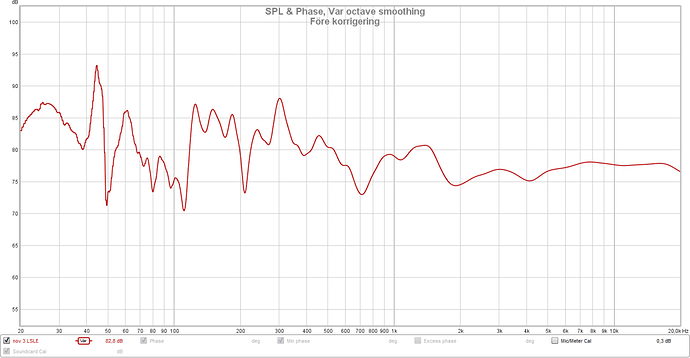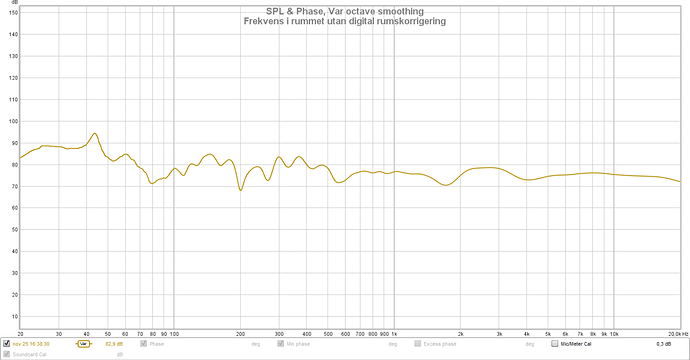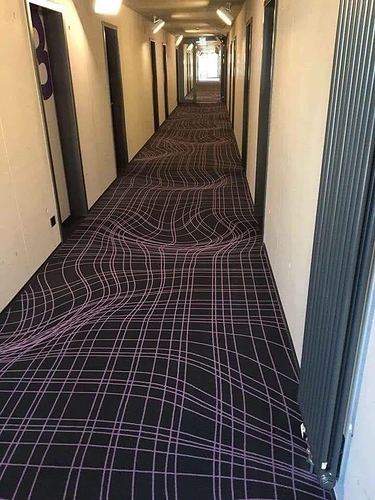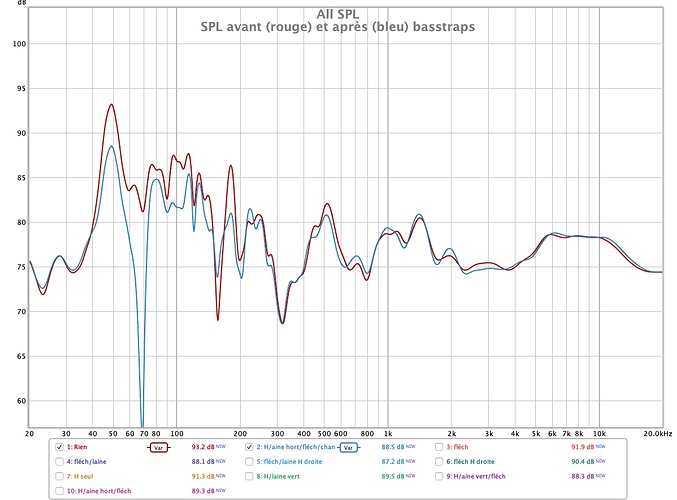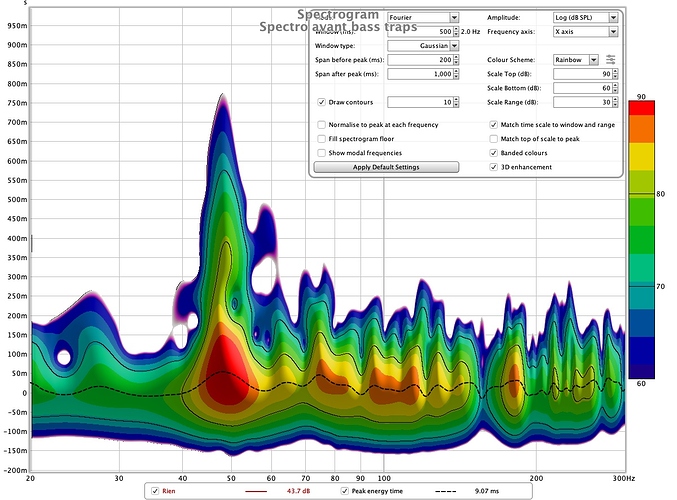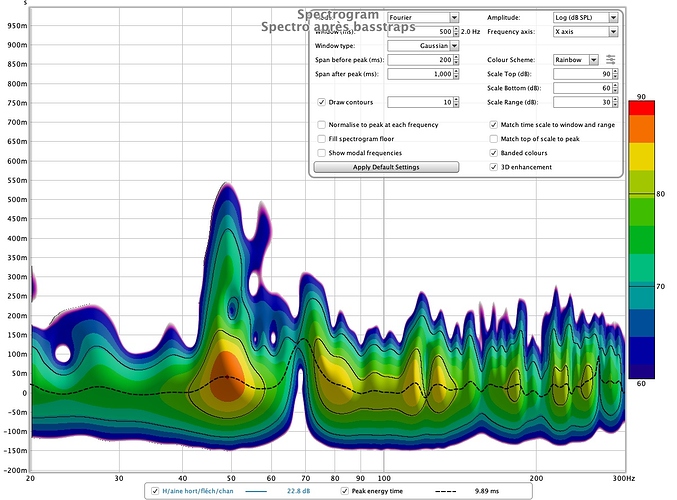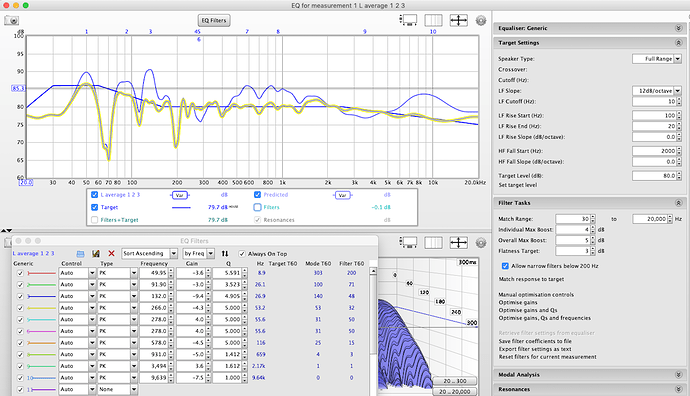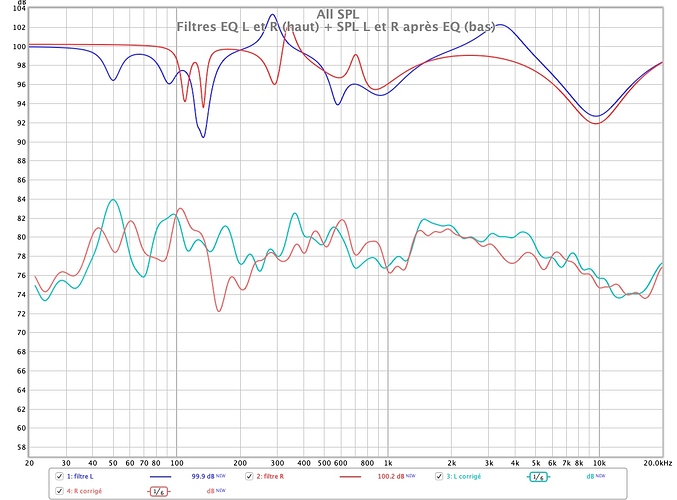So let’s speak about bass correction.
In more than 90% of the cases there are two problems encountered :
-
room modes, creating peaks and dips at certain frequencies
-
reverberation/decay time : walls/furnitures basically reflect bass waves. This means that the reverberation/decay is usually too high, across the whole bass range (no peaks and dips). The consequence is that bass notes take too much time to vanish and are “sustained” too long, “masking” the whole musical signal.
Room modes can be corrected with DSP or physical bass traps. Bass traps can be either broad band (glass wool, rockwool…) or narrow band (panels, Helmholtz resonators). If you use a broad band bass trap, you will still need EQ as the whole bass range will be lowered, therefore the peak will still be visible.
So room mode cancellation is better achieved with DSP or narrow band basstraps, or a combination of both. The effect is to be seen on the “SPL view” of REW.
Reverberation/decay time over the bass range cannot be reduced via DSP. It requires physical treatment in the form of bass traps. Use the “spectrogram” or “delay” tab in REW, not SPL.
In conclusion: if you have a reverberant room in the bass range like >90% of us, it is always a good idea to start with physical bass traps to reduce the reverberation/decay time to a reasonable level. Room modes can then be easily addressed with DSP/EQ. Only use minimum phase filters here, try to avoid gains lower than -6dB and Q above 10 if possible.
In my setup, I have 3 DIY bass traps: 0,5m3 hemp wool / 48 Hz panel resonator 0,6m2 / 48 Hz Helmoltz resonator 0,6m2. Then EQing everything with REW EQ.
This is SPL before (red) and after (blue) basstraps, before EQ:
Spectrogram before and after basstraps, showing an average 30% reduction in decay time up to 120Hz at least. Doesn’t seem much but very spectacular, no more boomy bass, clearer musical message, less listening fatigue, easier to pump up the volume…
Finally, EQing with REW (left channel shown here)
Shape of EQ filters on top (blue=left, red=right) and final SPL curve including bass trap and EQ at the bottom.
For those who don’t mind French here is a fantastic article on room measurement and correction:
Chapter 1 and Chapter 2.
See also here my panel and Helmholtz calculator (Excel), again in French sorry. Don’t use the mh-audio.nl calculator for bass resonators, it’s way too imprecise.

